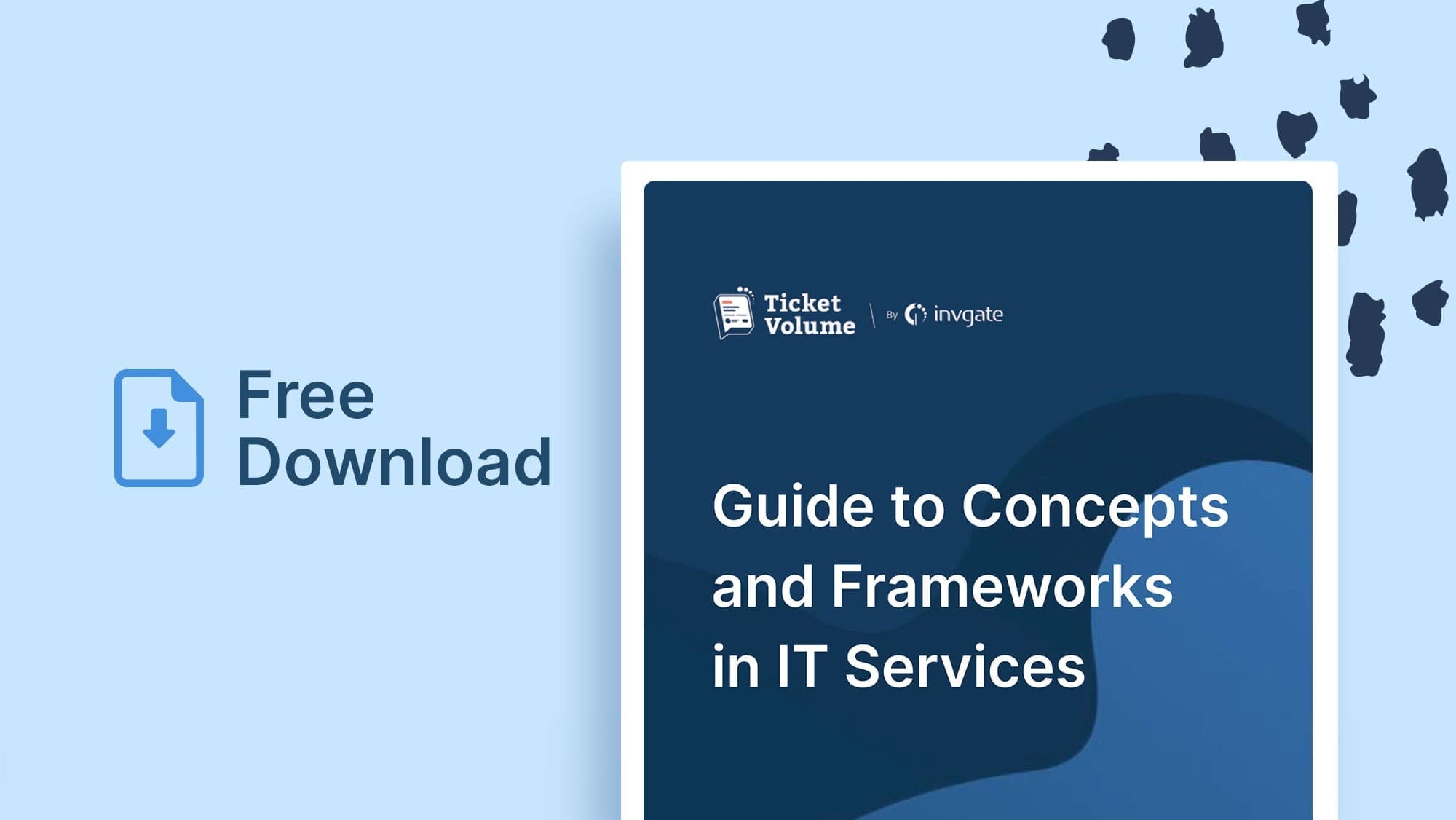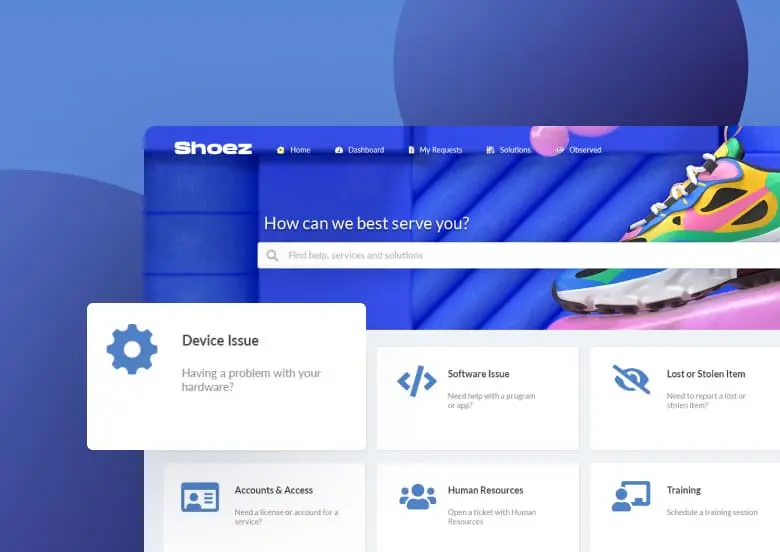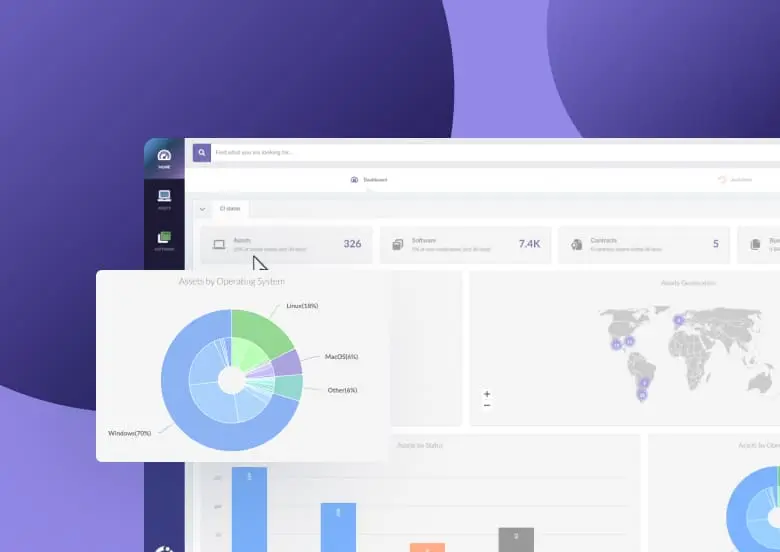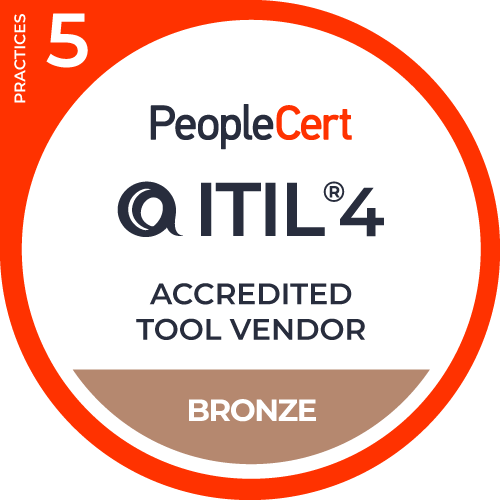Starting with ITIL can be overwhelming, especially when you’re unsure of where to begin. Don't worry; we’re here to help you take the right steps with some essential ITIL best practices.
This article will guide you in building a solid foundation for implementing ITIL effectively before diving into the official components of the framework. We've gathered these practical steps to set you up for success in managing IT services that align with your organization’s goals.
Let’s explore these best practices!
What is the ITIL framework?
The ITIL (Information Technology Infrastructure Library) framework provides a structured approach to IT Service Management (ITSM). It offers a comprehensive set of best practices and guidelines that help organizations effectively manage their IT services, ensuring alignment with business goals and customer needs.
Choosing ITIL for ITSM offers several advantages. It stands out as one of the most widely adopted frameworks, known for its customer-centric approach and focus on continual improvement. While other frameworks exist, such as the Microsoft Operations Framework (MOF) and Control Objectives for Information and Related Technologies (COBIT), ITIL remains the most recognized and utilized in the industry.
The goal is for organizations to create predictable IT environments, improve transparency, and enhance cost-effectiveness.

The Definitive Guide to ITSM Frameworks [+Free Downloadable Cheat Sheet]
Before getting started: Which ITIL version are you looking to implement?
When planning your ITIL implementation, it's essential to understand the differences between ITIL v3 and ITIL 4. Each version offers a unique perspective on IT Service Management, and choosing the right one can impact your approach and results.
ITIL v3, introduced in 2007, focuses specifically on IT Service Management. It provides a detailed set of practices to improve IT service delivery, including processes like Change Management, Problem Management, and service desk operations.
Despite being an older version, many organizations continue to use ITIL v3 effectively. Its structured approach remains valuable for those seeking to optimize IT Service Management within a traditional IT-centric framework.
ITIL 4, the latest version, takes a broader view of Service Management. It introduces the Service Value System (SVS), which integrates various components such as governance, practices, and continual improvement into a cohesive approach.
ITIL 4 connects IT Service Management with overall business goals, fostering greater collaboration across departments and focusing on creating value for the organization.
- Opt for ITIL v3 if your organization seeks a focused approach to refining IT Service Management processes and practices. It’s well-suited for environments that need structured IT Service Management without extending beyond IT functions.
- Choose ITIL 4 for a comprehensive framework that aligns IT Service Management with overall business strategy. It’s ideal if you’re looking for a framework that integrates IT practices with broader organizational goals and emphasizes flexibility and continuous improvement.
ITIL best practices you can follow
ITIL encompasses a range of practices designed to improve IT Service Management, including well-known ones like Change Management and Problem Management.
However, this article is not about detailing these specific practices. Instead, we will focus on the broader best practices for getting started with ITIL.
These are general guidelines and strategies to help organizations successfully implement the ITIL framework.
Conduct a current state assessment
A current state assessment evaluates your existing IT Service Management processes. You'll review how your IT services are currently being managed and identify areas for improvement. This assessment provides a baseline for measuring progress and pinpointing areas where ITIL practices will have the most impact.
Steps to conduct an assessment
- Identify existing IT Service Management processes: Map out all current IT service processes. This includes understanding how services are delivered, managed, and supported.
- Gather data: Use surveys, interviews, and documentation reviews to collect information from various stakeholders. This helps in understanding the strengths and weaknesses of current practices from multiple perspectives.
- Analyze strengths and weaknesses: Review the gathered data to identify what’s working well and what needs improvement. This analysis will highlight areas where ITIL practices can be effectively introduced.
Several tools can assist in conducting a current state assessment. SWOT analysis (assessing strengths, weaknesses, opportunities, and threats) and process mapping are particularly useful.

The 7 ITIL Principles and how to Apply Them
Define clear objectives and goals
Having clear objectives for your ITIL implementation is essential for success. Objectives provide direction and help measure the effectiveness of the implementation. Measuring progress and achieving your desired outcomes is challenging without well-defined goals.
SMART goals framework
The SMART criteria—Specific, Measurable, Achievable, Relevant, and Time-bound—provides a structured approach to setting objectives:
- Specific: Define clear and specific goals. For example, "Reduce incident resolution time by 20% within six months."
- Measurable: Ensure that your goals can be quantified. Use metrics to track progress, such as "Improve service delivery times from 48 hours to 24 hours."
- Achievable: Set realistic goals that are within your capability to achieve. This might include "Enhancing customer satisfaction scores by 15%."
- Relevant: Align goals with broader business objectives to ensure they contribute to overall success. For example, "Reduce operational costs by 10% to support budget constraints."
- Time-bound: Set deadlines for achieving goals. For instance, "Complete the ITIL implementation phase within the next quarter."
Remember that your ITIL goals must be aligned with the organization’s overall business strategy. This is the best way to gain support from key stakeholders. We'll see more about this in the next section.

Strategies, Benefits, and Best Practices for Digital Innovation
Engage stakeholders early
Engaging stakeholders early helps align ITIL practices with business objectives, increases buy-in, and fosters a shared understanding of the changes you will implement.
To successfully engage stakeholders, you need to identify who they are. Key stakeholders typically include:
- IT staff: These are the people who will implement and manage ITIL processes daily. Their input helps ensure that practices are practical and achievable.
- Management: Leadership must be on board to support ITIL initiatives, allocate resources, and drive strategic alignment.
- End-users: Users interacting with IT services will provide valuable feedback on service effectiveness and usability.
Engaging stakeholders can take various forms. Effective strategies include:
- Workshops: Organize sessions to discuss ITIL practices, gather input, and brainstorm solutions. W
- Feedback sessions: Regularly collect feedback from stakeholders to understand their needs and address any issues promptly. An ongoing dialogue helps refine ITIL practices and demonstrates responsiveness.
- Regular updates: Keep stakeholders informed about the progress of ITIL implementations through newsletters, meetings, or project updates.
Transparency builds trust and ensures everyone is aligned with the project goals. Early engagement helps create a collaborative culture by involving stakeholders in decision-making processes and demonstrating that their opinions matter.
This approach encourages a sense of ownership and commitment to ITIL practices. When stakeholders feel involved, they are more likely to support the changes and work together to overcome challenges, leading to a more successful implementation.
Adopt an ITIL-certified ITSM solution
Opting for an ITIL-certified ITSM solution (such as InvGate Service Management) brings several advantages. These solutions are designed to align with ITIL best practices, ensuring that your IT Service Management processes are standardized, efficient, and effective.
A certificated ITSM software guarantees that it supports key ITIL practices and will integrate seamlessly into your existing processes, helping you achieve consistency and compliance with ITIL guidelines.
Every organization has unique needs, so it's important to evaluate which ITIL processes you want to implement. ITSM tools can support various ITIL practices, but you don’t have to adopt them all at once.
You might want to start with just a few key practices that align with your immediate goals, such as incident management or Change Management, and gradually incorporate more as your team becomes comfortable.
Features to look for
When evaluating ITSM solutions, you can consider the following key features that will help you effectively implement ITIL practices:
Incident Management
- Ability to log, categorize, prioritize, and resolve incidents efficiently
- Automated workflows for incident escalation and communication
- Knowledge base integration for faster incident resolution

The 11 Best Incident Management Software
Change Management
- Streamlined process for proposing, assessing, approving, and implementing changes
- Risk assessment and impact analysis tools
- Rollback and recovery mechanisms in case of failed changes

A Complete Guide to Change Management Software + Top Picks
Problem Management
- Functionalities to identify and investigate the root causes of incidents
- Proactive problem detection and prevention capabilities
- Knowledge sharing and trend analysis to prevent recurring problems

10 Problem Management software in 2024
Knowledge Management
- Centralized repository for storing and sharing information
- Intuitive search and retrieval functionality for users and support staff
- Collaborative features for creating, updating, and rating knowledge articl
Finally, don't forget to provide training for your team to ensure they can effectively use the new system and fully leverage its features. The next step will discuss this topic.
Invest in training
Without proper education, team members may struggle to understand and apply ITIL practices. Comprehensive employee training programs ensure that everyone involved is well-versed in ITIL principles, directly impacting the efficiency and effectiveness of the IT Service Management process.
Organizations can choose from various training options to meet their needs:
- Workshops: Interactive sessions that provide hands-on experience with ITIL concepts and tools.
- Online courses: Flexible learning opportunities that allow team members to study at their own pace.
- Certification programs: Formal courses that lead to ITIL certification, validating the knowledge and skills of individuals.
Encouraging team members to pursue ITIL certification offers multiple benefits. Certification not only enhances individual skills but also boosts team confidence in applying ITIL practices. It provides a benchmark for assessing expertise and demonstrates a commitment to IT Service Management excellence.
Ongoing training and development help maintain and improve ITIL practices over time. Foster a culture of continuous learning by providing regular training opportunities and encouraging knowledge sharing. This approach ensures that your team remains up-to-date with the latest ITIL developments and continuously enhances their skills.
Commit and stay proactive
Implementing ITIL is not a one-time event or simply about installing ITSM software. When you decide to follow an ITSM framework, the goal is to consistently enhance your Service Management process, and effective ITIL implementation requires a commitment to continuous review and improvement.
Why does continuous improvement matter? Business environments and technology are always changing. Regularly reviewing and adjusting your processes ensures that your IT services stay relevant and effective. Consider that users and stakeholders will always have feedback that you can use to identify areas for improvement.
You should also continuously measure performance against benchmarks and metrics. Encourage teams to assess and enhance their practices regularly to foster a culture that values ongoing improvement. ITIL is a journey rather than a destination; make continuous improvement a key part of your Service Management strategy.

The Ultimate Guide to Continual Service Improvement
Final words: Why following ITIL best practices matters
Choosing ITIL is a smart move for organizations. It can significantly improve your IT Service Management capabilities.
ITIL best practices can help you:
- Align IT services with business objectives leading to better outcomes for the organization.
- Enhance customer satisfaction by helping you provide efficient, reliable, and high-quality IT services for internal and external customers.
- Better manage IT resources, reduce waste, and optimize costs associated with delivering IT services.
- Improve communication and collaboration between IT teams and business stakeholders, leading to better alignment and understanding.
Use best practices to successfully implement ITIL and integrate the framework into your organization.
And if you want to explore an ITIL-certified tool, you can ask for your 30 day free trial of InvGate Service Management!
















